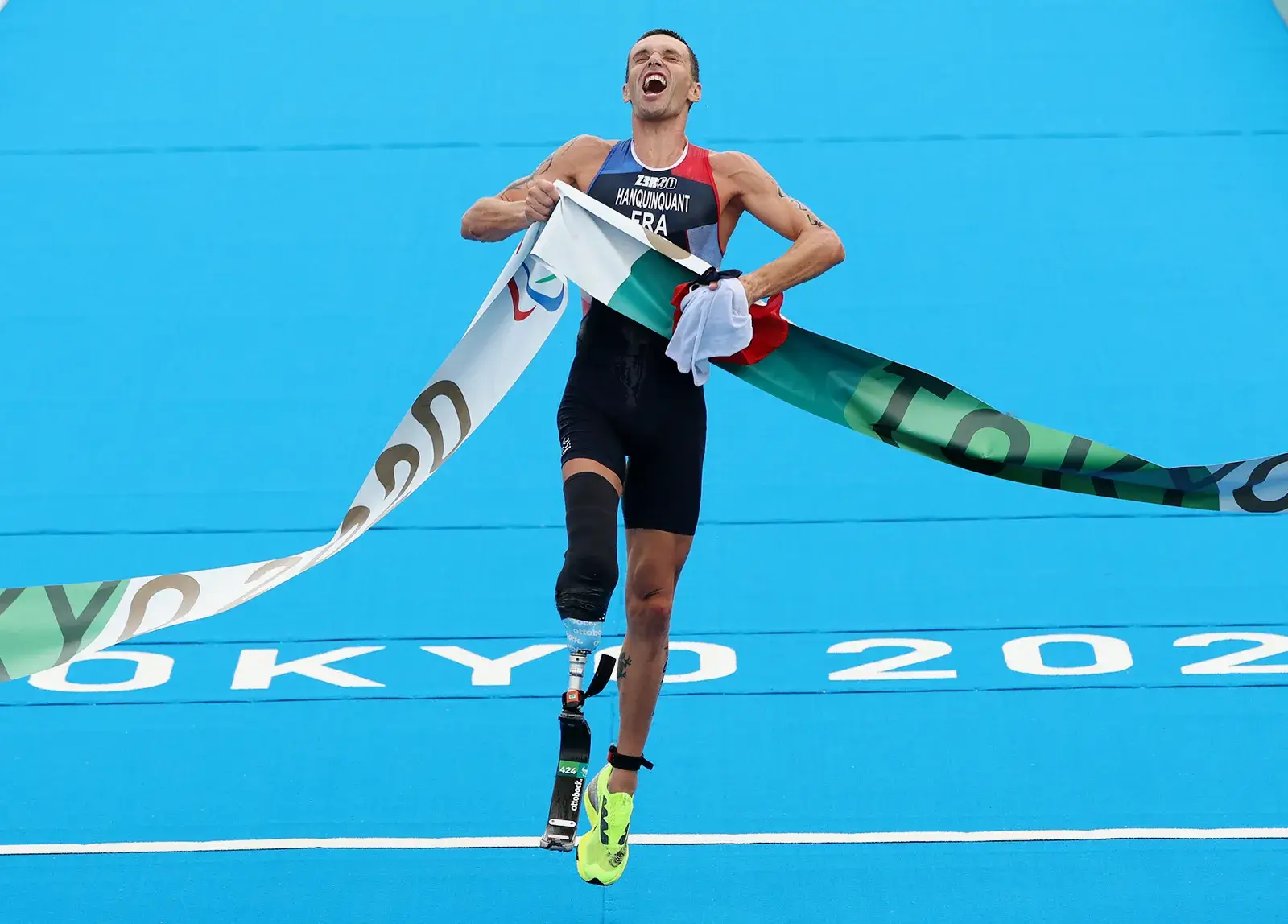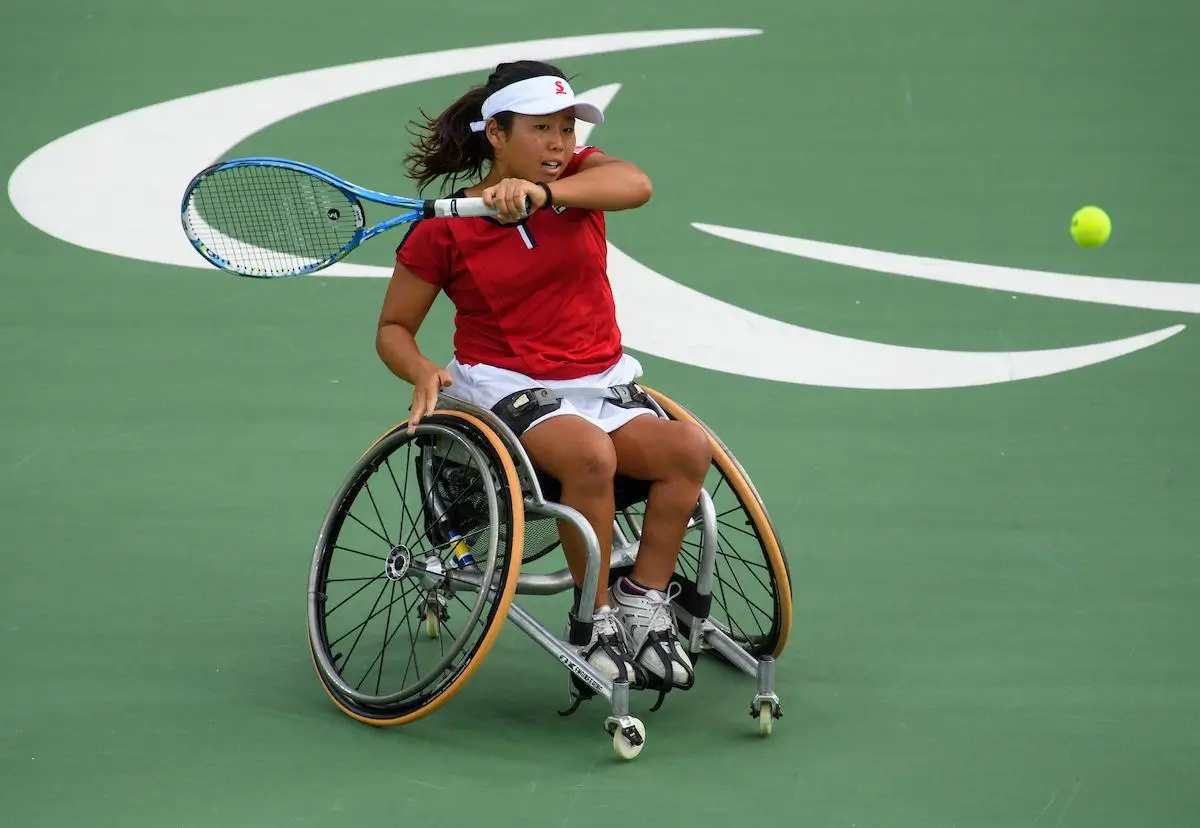The Paralympic Games celebrate human strength. Athletes with disabilities inspire us all. Technology makes their training better. It helps them achieve more. From prosthetic limbs to smart devices, tech is a game-changer. This article explores these tools. We look at how they boost athlete performance. They also make disability sports fairer.
Custom legs help runners go faster. Wearables track health and progress. Virtual reality creates safe practice spaces. These innovations open doors for everyone. They show that anyone can shine in sports. Let’s dive into the exciting world of sports technology in Paralympic training.
Advanced Prosthetics and Orthotics

Prosthetic limbs are vital for Paralympic athletes. These are special arms or legs. They’re made just for each athlete. Strong materials like carbon fiber are used. They’re light and help athletes move fast. Runners use blades that store energy. This makes them sprint quicker. Swimmers get flexible limbs for water.
Each prosthetic fits the athlete’s sport. Engineers and scientists team up. They use 3D scans for perfect designs. This makes movement feel natural. Athletes stay comfortable during training.
Some prosthetics have sensors. These track how athletes move. Coaches use this to improve skills. It helps athletes get better.
Prosthetics can be stylish too. Athletes pick colors they love. This boosts their confidence.
Adaptive technology like this changes sports. It lets athletes with disabilities compete strongly. Technology makes inclusive sports possible. It’s exciting to see what’s next.
Customized Limbs for Peak Performance
Custom limbs are key for success. Each athlete gets a unique design. It matches their sport and body. Sprinters need light, fast blades. Swimmers need flexible arms. 3D printing creates perfect fits. Athletes test designs to find the best.
Custom limbs feel like real body parts. This helps them move naturally. It also builds confidence. With the right limb, they can win big.
The Science Behind Prosthetic Design
Prosthetic design uses lots of science. Engineers study body movements. They test designs with computers. This ensures limbs work well. Materials like titanium are strong but light. Sensors track how limbs move. They send data to coaches.
This helps fix small issues. Science keeps improving prosthetics. Athletes get faster and stronger. They can do amazing things now.
Wearable Technology in Training
Wearable tech helps athletes train smarter. These are devices like watches. They track heart rate and speed. Athletes wear them while practicing.
Runners with prosthetics check their steps. Sensors show if they’re balanced. This improves their running. Coaches use data to plan better. They see what needs work.
Wearables also watch health. They track sleep and stress. This prevents overtraining. Athletes stay strong and safe, also nanotubes play role in technology.
Some devices are special. A swimmer’s cap might vibrate. It tells blind swimmers when to turn. This helps them swim confidently, Sports science makes training easier. Athletes don’t need big equipment. They can train anywhere. This is great for Paralympic athletes. Many face travel challenges.
Wearables give real-time data. Athletes improve quickly. Technology makes training safe and smart.
Real-Time Data for Optimal Performance
Real-time data helps athletes instantly. Wearables show speed and power. Runners see their progress. Cyclists check their strength. This lets them fix mistakes fast. It keeps them motivated. Coaches use data to plan training. They give the right challenges. Athletes get better and win more after the gender equality.
Monitoring Health and Preventing Injuries
Health matters for Paralympic athletes. Wearables track sleep and stress. They warn if something’s off. Low sleep means more rest. High stress means lighter training. This stops injuries early. Athletes with disabilities need extra care. Their bodies work differently. Wearables keep them safe. They train hard but smart.
Assistive Devices for Inclusive Sports

Assistive devices make sports open to all. They help athletes with disabilities play. Smart wheelchairs are a big example. They’re light and fast. Some have motors for power. This helps in wheelchair sports like basketball.
Other devices help with senses. Blind athletes use beeping balls. They hear the ball’s location. Deaf athletes see flashing lights. These signals start races.
Some devices use voice commands. Athletes can control them easily. This makes sports more fun.
Experts design these tools carefully. They work with athletes to test them. This ensures they work well. Inclusive sports are growing because of technology. Athletes compete at high levels. They show everyone can play and that is why Indian Medal tally is increasing.
The future is bright. Exoskeletons might help walking athletes run. AI could coach better. Sports technology is making sports fairer every day.
Smart Wheelchairs and Mobility Aids
Smart wheelchairs change wheelchair sports. They’re fast and light. Some have motors for speed. Custom seats keep athletes comfy. In basketball, wheelchairs tilt for reach. In racing, they’re built for speed. These chairs help athletes move better. They’re like partners in the game. Technology makes them strong and easy to use.
Sensory Enhancement Technologies
Sensory tech helps athletes with vision or hearing issues. Beeping balls guide blind players. They know where to aim. Flashing lights help deaf athletes. Vibrations signal race starts. These tools make sports fair. Everyone gets the same information. Athletes focus on playing, not worrying. This builds skill and confidence.
Virtual Reality and Simulation Training

Virtual reality training is like a game for athletes. It creates fake worlds for practice. These worlds feel real. Athletes train without leaving home. Skiers practice on virtual snow. Cyclists ride through virtual hills. They learn to handle tough conditions.
VR builds mental strength too. Athletes face virtual crowds. This prepares them for real pressure. It’s safe for Paralympic athletes. They can try new moves without risk. This is great for skill growth.
VR is easy to use. Athletes don’t need to travel. This helps those with disabilities. They can train from anywhere. The future of VR is exciting. Haptic suits might add touch feelings. AI could give live coaching. Training methods like VR are powerful. They’re fun and effective. They help athletes reach their best.
Immersive Environments for Skill Development
VR creates real-feeling practice spaces. Athletes enter virtual stadiums. They hear crowds and feel pressure. This helps them stay calm in games. They can test new skills safely. Jumpers try different angles. Runners practice starts. VR shows what works best. Athletes train anytime, anywhere. This is huge for disability sports.
Accessibility in Virtual Training Platforms
VR is made for everyone. Hand controls help those with leg issues. Voice commands make it easy. Athletes train without travel. This is key for Paralympic athletes. Many face mobility challenges. VR levels the playing field. Everyone gets equal training chances. Technology makes inclusive sports possible.
Conclusion
Technology is transforming disability sports. It helps Paralympic athletes train better. Tools like prosthetic limbs and VR make a difference. They improve athlete performance and fairness.
Athletes can now achieve amazing things. They run faster and compete stronger. Technology gives them confidence. It’s not just about winning. Sports technology makes sports fun for all. More people can join in.
The future is full of promise. New tools will keep coming. They’ll help athletes break more records. Paralympic athletes are already incredible. With technology, they’re unstoppable. Let’s cheer for them and their tech helpers. Together, they’re building a brighter future for inclusive sports.

